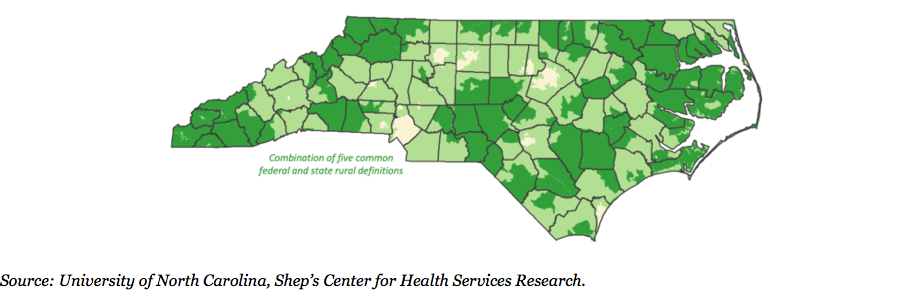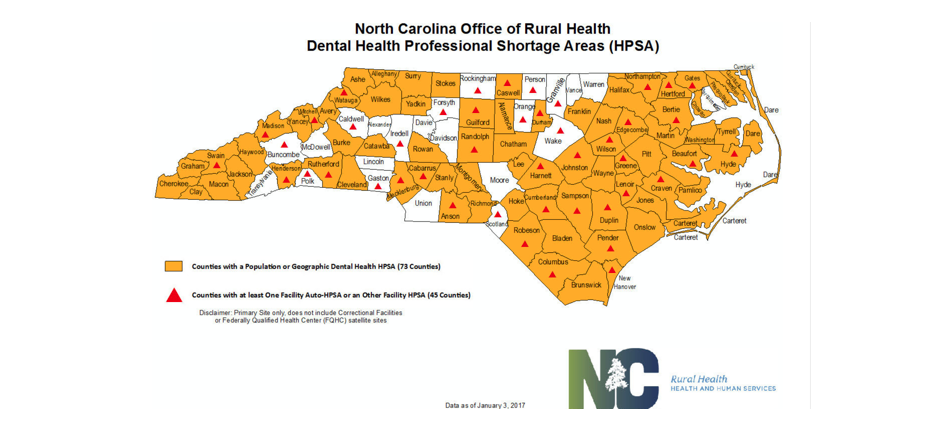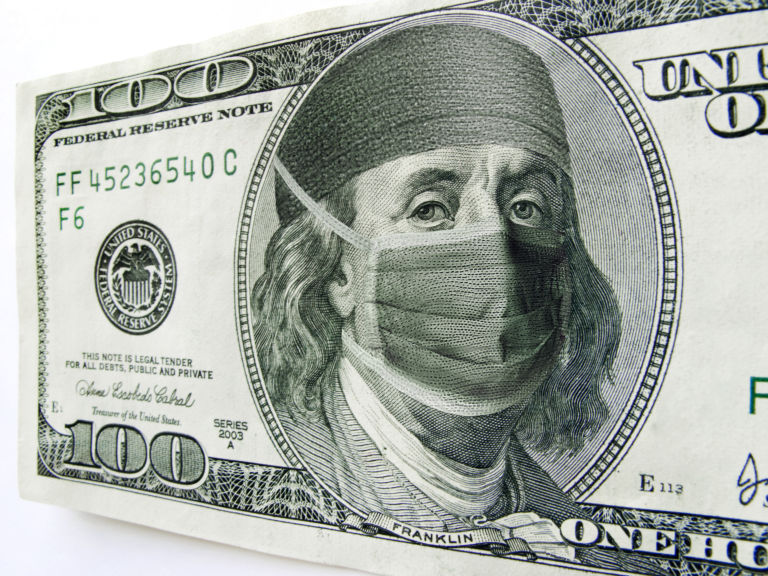For patients living in rural North Carolina, access to health care can be hard to find. Over 1.4 million people live in primary care shortage areas. That’s 14 percent of the state population.
How exactly should ‘rural’ be interpreted? It’s a debatable term, given that that federal government defines it 17 different ways. To provide better context as to which areas of the state are commonly defined as ‘rural,’ the dark green regions shown in the map below share more federal and state definitions compared to the lighter green regions.

Legislators are acutely aware of the unmet needs in these areas, which is why the committee on Access to Healthcare in Rural North Carolina held its first meeting last week. Experts and advocates who were brought in to discuss the state’s rural health landscape made some solid suggestions, such as expanding telemedicine and opening more residency slots in rural hospitals.
Another effective solution that was left out of the dialogue is to increase the supply of midlevel health care providers.
Let’s look to the dental therapist profession as an example. Dental therapists work under dentists, much like physician assistants and nurse practitioners work in a collaborative agreement with physicians. Within their scope of training, they can provide many routine dental services, like filling cavities and extracting teeth.
Compared to the U.S., dental therapy is more established in 50 other countries. So far, only three states – Vermont, Maine, and Minnesota – authorize dentists to hire dental therapists. Other state legislatures are actively exploring the idea. Yet, evidence about the profession on a global scale shows that dental therapists play an important role in improving access to health care, particularly in underserved areas.
The same holds true in the U.S. After one dental hygienist completed three years of training to become a dental therapist, the practice she works for in Minnesota increased its new patient volume (including Medicaid patients) by 38 percent in less than one year. And now that her scope of practice has expanded, the dentist has room in his schedule to handle more complex cases.
Sounds like a ripe opportunity for competitive advantage, no? Dental therapists are trained to provide up to 80 services on par with a dentist. More importantly, because dental therapists in Minnesota have a relaxed supervision agreement with dentists, they can go into rural communities on their own to provide patients with certain oral health needs. Available data show that 48 percent of dental therapists are practicing in suburban and rural areas of the state.
Revisiting North Carolina’s landscape, dental health professional shortage areas (HPSAs) are just as severe as HPSAs for primary care and mental health. According to the Kaiser Family Foundation, the state needs 305 more dentists (1 per 5,000 people) in the following locations:

Source: NC Office of Rural Health
Dental therapy can certainly play a big role here. Imagine how patients would benefit over time if lawmakers decided to draft legislation that would allow for this profession to develop. Ideally, such a proposal should include the following guidelines:
- Standard educational requirements as established by the Commission on Dental Accreditation (CODA), an independent entity that is part of the American Dental Association (ADA).
- The ability for dental therapists to collaborate with dentists under general supervision rather than direct supervision. General supervision grants dental therapists more flexibility to go out into underserved communities and provide certain oral health services on their own.
For more information on how other states govern dental therapy, check out the Pew Charitable Trust’s website here.


